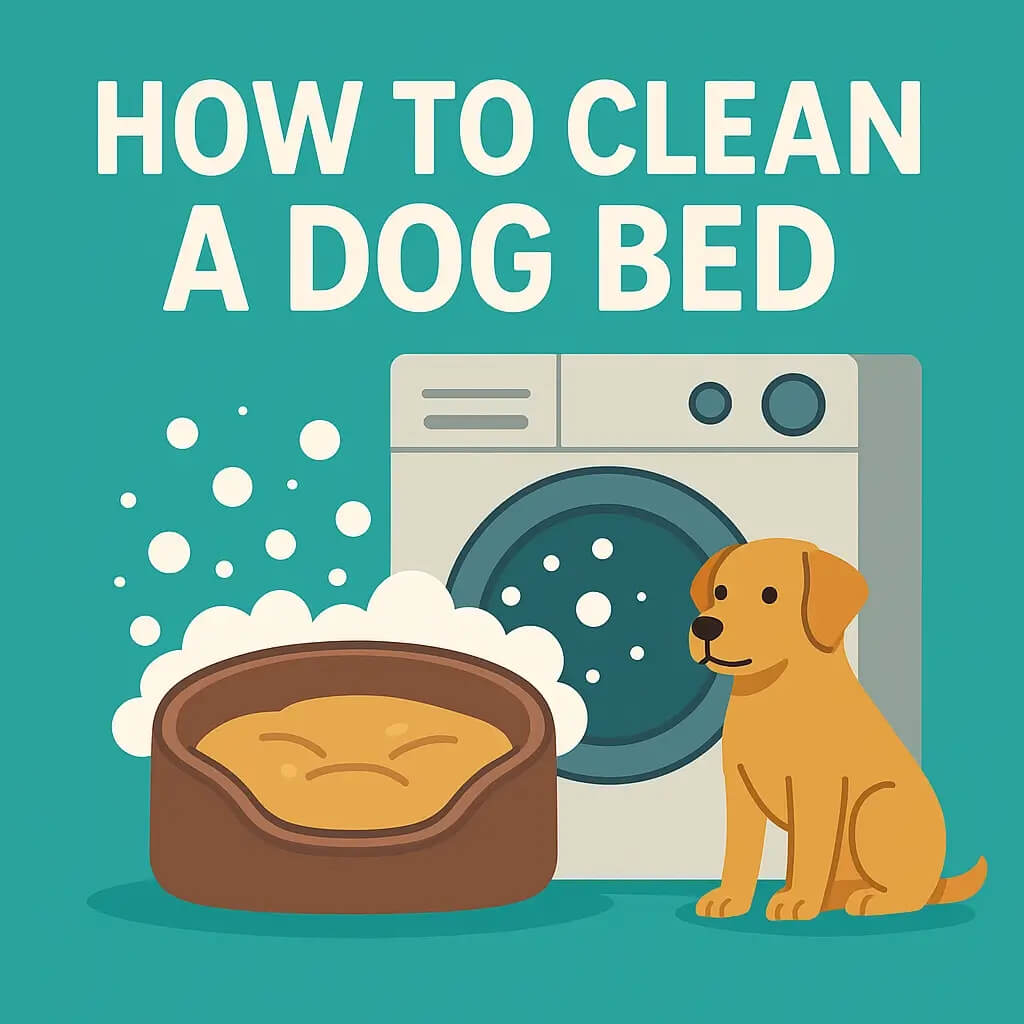Dogs naturally exhibit the scratching and digging behavior around their dog beds, even though it may seem unusual to humans. Many pet owners notice their dogs scratch their beds or dig at blankets, especially before sleep. With millions of dog lovers in the United States owning at least one furry friend (APPA 2025 State of the Industry), bed scratching or bed digging is a very common sight.
A dog’s bed scratching serves several purposes—it helps dogs locate a cooler layer, use their paw scent glands to mark territory, and self-soothe before rest. This guide offers valuable insights into why dogs scratch their beds, explores both instinctual and medical causes, and provides effective methods to reduce excessive scratching while keeping your dog’s bed and furniture safe.
Quick Facts
-
Instinct lives on. Wolves dig shallow dens for warmth and shelter; your pup mimics that by scratching at bedding.
-
Temperature matters. Federal rules require “dry bedding or other heat-saving methods when kennels drop below 50 °F” (9 CFR §3.1).
-
Territory tags. Dogs have two paw glands that leave their personal scent with every scrape—a silent “this spot is mine.”
-
Health link. Fleas are the most common external parasite in dogs (Cornell Canine Health Center) and trigger up to 40 % of all scratching cases.
-
Behavior flag. In an AVMA case study, door-scratching and pacing were classic signs of separation anxiety (JAVMA 244:1149).
Instinct in Action
Before the invention of pillows and memory-foam mats dogs in the wild used their paws to create protective dens for hiding food and escaping danger. Research today demonstrates that pets continue their natural digging behavior by using carpeted areas or dog beds instead of their wild ancestors' natural digging grounds. The act of scratching helps dogs control their body temperature by rearranging their bedding material during winter months and summer months. The scent from paw glands that dogs deposit during scratching serves as a warning to other dogs that the sleeping area belongs to them. The understanding of this ancestral behavior enables owners to recognize scratching as an instinctual behavior instead of destructive behavior which leads to more compassionate training methods.
Top Everyday Triggers
- Getting Comfy. Dogs scratch to fluff up their bedding, creating a cozy spot that supports joints.
- Mark Territory. Every scrape leaves scent, turning their bed into a familiar sleeping area that “smells like home.”
- Temperature Tweaks. When a room gets cold, dogs dig to find cooler layers or to stay warm—a reflection of their natural instinct to regulate body temperature.
- Boredom or Low Mental Stimulation. Lack of physical activity or interactive dog toys can make dogs resort to compulsive digging as a coping mechanism.

- Anxiety & Loud Noises. Thunder, fireworks, or strange noises can make dogs dig or scratch their beds to feel safe.
- Parasites & Itch. Fleas or mites can cause excessive scratching. Always check your dog’s bed, blankets, and coat for signs.
- Pregnancy Nesting. Female dogs nearing labor instinctively dig or shred bedding to create a warm nest for pups.
Pro Tip: Identify which trigger matches your dog’s routine or breed (for example, terriers and Siberian Huskies are known for digging habits) and then tailor the fix—add interactive dog toys for boredom, a vet visit for itching, or a soft blanket for warmth.
When Scratching Becomes a Health Red Flag
Most bed-scratching is harmless, but pair it with other signs—hair loss on paws, red skin, restless pacing—and call the vet. Cornell vets warn that flea-allergy dermatitis can flare with only one or two bites (Cornell Flea Guide). Meanwhile, door-scratching linked to whining or house-soiling often signals separation anxiety (AVMA Case Report). Left unchecked, anxiety may escalate to self-injury. If you spot swollen paw pads, check for splinters or dermatitis; if your pup digs all night and pants, ask your vet about arthritis pain or overheating. Early exams save money and keep your furry friend happier in the long run.
Fix-It Plan
A smart plan stops dog’s bed scratching without hurting trust. Work through each step—bed, behavior, and health—until your pup settles on a comfortable bed instead of shredding one.
Upgrade the Bed
Think of your dog’s bed as comfort gear, not décor. Thin or worn-out pads trap heat, forcing dogs to dig for cooler layers. Invest in a durable, washable, or elevated dog bed that allows airflow and reduces the urge to scratch their beds. Orthopedic dog beds provide joint relief, while a waterproof dog blanket adds warmth in colder months.

If your home drops below 50°F, add a fleece topper, move the bed away from a breeze, or place it near a warmer area. For heavy scratchers, dig-proof covers or human dog beds can withstand scratching and pawing for years.
Bonus Tip: A comfortable bed designed to withstand digging behavior can significantly reduce damage and improve your dog’s sleep quality.
Train an Alternate Behavior
Scratching meets a need—comfort or calm—so replace it, don’t punish it. Teach a three-step “Go to Place”:
1 ️⃣ Toss a treat on the bed; say “Place.”
2 ️⃣ When your dog lies, mark with “Yes!” and feed again.
3 ️⃣ Repeat until the cue alone works.
Reward-only plans cut anxiety, says the AVSAB Humane Dog Training Statement, which calls positive methods “best for welfare and learning.”
Positive reinforcement builds consistency and encourages calmness. Add mental stimulation through dog toys, puzzle games, or short training sessions. Many dogs that scratch excessively are simply bored or anxious—especially when left alone.
Rule Out Medical Causes
If your dog digs all night, pants, or limps, look deeper. Run hands over the coat; fleas hide at the tail base. Arthritic dogs circle and paw to find a painless sleeping area. Still seeing raw paws or endless itching? Book a skin work-up—dermatitis and allergies top the list of common reasons why dogs scratch beds.
Cost of Doing Nothing
Ignoring bed scratching can hit the wallet. A 2024 SquareTrade furniture-damage survey found dogs cause 20 % of all home-furniture mishaps and push annual repair bills to an average $287 per household. Compare that with prevention: $45 for monthly flea meds, $80 for a chew-proof cover, or $0 for a 10-minute training session. Skip the fixes and you’ll pay in chewed zippers, torn foam, and maybe a vet visit for swallowed fabric.
FAQs
Why do dogs scratch their beds at night?
Most dogs dig or scratch before bedtime to make a softer, cooler, or warmer spot—just like their wild ancestors pawed ground to build a nest. It’s a natural instinct, not mischief.
Is bed-scratching normal or a behavioral problem?
In most cases it is completely normal. Your dog is either regulating body temperature, marking territory with paw scent glands, or settling nerves. It becomes a problem only if the scratching is frantic, nonstop, or paired with other signs of pain or anxiety.
How can I stop my dog from tearing up his bed?
First rule out fleas or joint pain with a vet check. Then upgrade to a tougher, washable dog bed and reward your pup for lying down calmly instead of scratching. Puzzle toys and extra playtime also curb boredom digging.
Myths vs. Facts
|
Myth |
Fact |
|---|---|
|
“Scratching means my dog is naughty.” |
Most dogs dig because of instinct or joint pain—not spite. |
|
“A quick yell will stop it.” |
Punishment can spike anxiety. |
|
“Only puppies scratch.” |
Seniors with arthritis scratch more to get comfy. |
|
“Hard floors solve the problem.” |
Cold tile makes some dogs scratch harder to pile up blankets. |
Conclusion
So, why do dogs scratch their beds? It’s primarily about comfort seeking, temperature regulation, and territorial scent-marking—all rooted in ancestral instincts.
Check for triggers, then upgrade your dog’s bed, use positive reinforcement training, and consult a veterinarian for any medical concerns. Watch your dog’s habits—if scratching increases with loud noises or when you leave, it could indicate separation anxiety.
By understanding your dog’s natural behavior, you’ll help your pet feel calm and secure while protecting your home. Share this guide with fellow pet parents—after all, saving one dog bed can save a dozen pillows!












